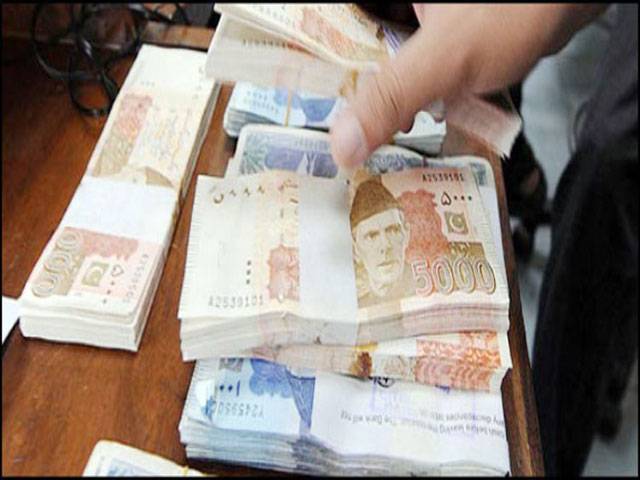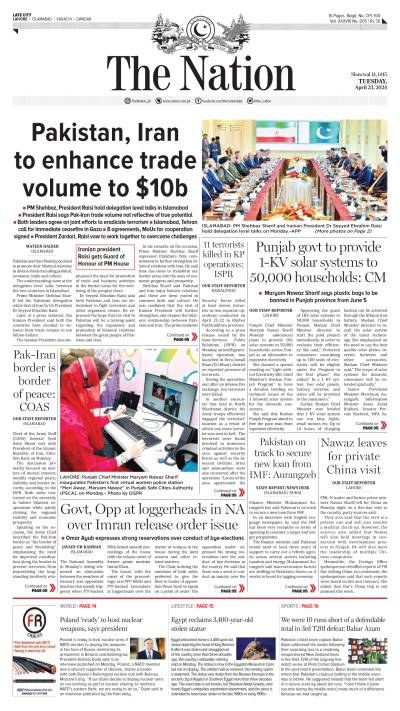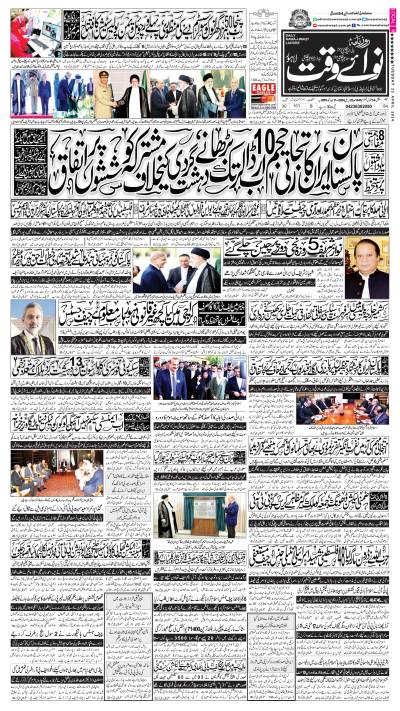ISLAMABAD - Pakistan’s budget deficit had recorded at Rs796.3 billion during first half (July-December) of the current fiscal year due to the cost of domestic and foreign debt servicing.
The country’s expenditures were recorded at Rs3181 billion as compared to revenues of Rs2384.7 billion, leaving the deficit to Rs796.3 billion. The overall budget deficit – gap between expenditures and incomes – has widened to 2.2 percent of Gross Domestic Product (GDP), according to the official data of the ministry of finance.
Keeping in view the current trend, the deficit would be higher than the target set by the government in the budget for the current fiscal year.
The government had set budget deficit target at Rs1.48 trillion (4.1 percent of the GDP) for the ongoing financial year 2017-18. However, the International Monetary Fund (IMF) had estimated the deficit at more than 5 percent of the GDP.
However, the federal government is working to restrict it at below 5 percent of the GDP by the end of current fiscal year.
“We hoped to restrict the deficit at below 5 percent of the GDP as the tax collection of the Federal Board of Revenue is impressive that had recorded around 17 percent growth,” said an official of the ministry of finance.
The official data further showed that the financing of budget deficit of Rs796 billion of the first half was bridged through borrowing, Rs412.2 billion from the internal sources and Rs384.1 billion from foreign lenders. Statistical discrepancy has recorded at Rs20 billion during first half of the year 2017-18.
One of the main reasons of increasing the budget deficit was the massive payment of Rs751.4 billion on domestic and foreign debt servicing during July-December period. Debt payment is rapidly increasing every year, as the successive governments had taken massive loans from the international financial institutions as well as from local banks. The government had allocated Rs1363 billion for the interest payment during whole current fiscal year.
Debt payment always remained on top in consuming budget among three Ds (debt servicing, defence and development). Interest payment had once again gone beyond than the spending on defence and development during first quarter of the current fiscal year.
The government had spent Rs393.4 billion on defence of the country, which is 42.75 percent of the annual defence budget of Rs920.2 billion.
The lowest spending among three Ds were on federal development, which remained at Rs242.1 billion during July-December period of the ongoing financial year. The documents showed that the government spent Rs149.8 billion on pension payments, Rs59.5 billion on public order and safety affairs, Rs40.4 billion on education, Rs7 billion on health sector and Rs4.1 billion on recreation, culture and religion.
On the other hand, of the total revenues of Rs2384.7 billion, the government has collected around Rs357.8 billion as non-tax revenues during the first half (July to December) of the present fiscal year.
In non-tax revenues, the government collected Rs13.9 billion as markup on public sector entities, Rs19.2 billion as dividend, Rs125.2 billion as profit of State Bank of Pakistan, Rs6.1 billion as defence , Rs7.5 billion as passport fee and Rs4.1 billion as discount remained on crude oil, Rs26.6 billion as royalties on gas and oil, Rs841 million as windfall levy against crude oil and Rs145 billion through other sources.
The four provincial governments recorded budget surplus of Rs150.8 billion during July-December of the current fiscal year as their expenditures remained at Rs1213.1 billion as compared to the revenues of Rs1363.8.5 billion.






